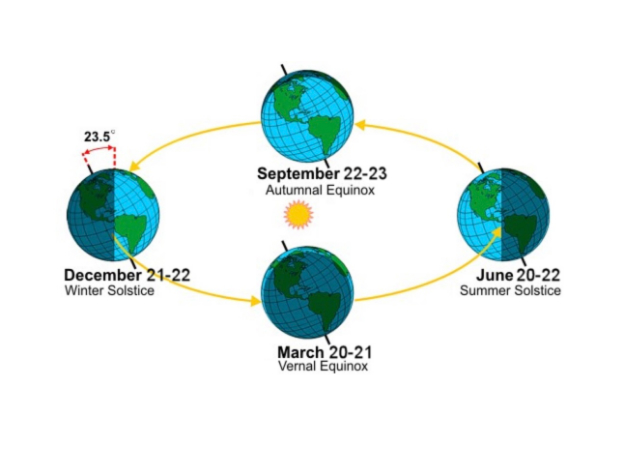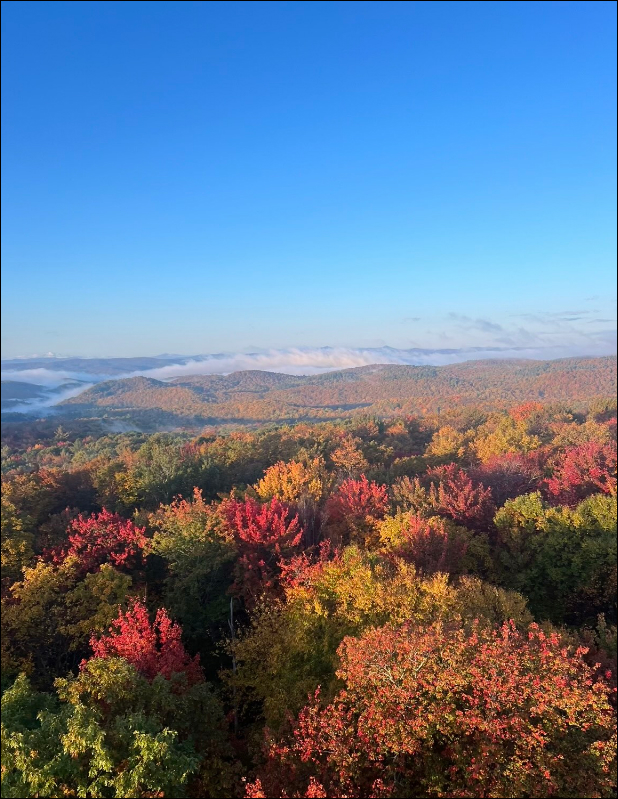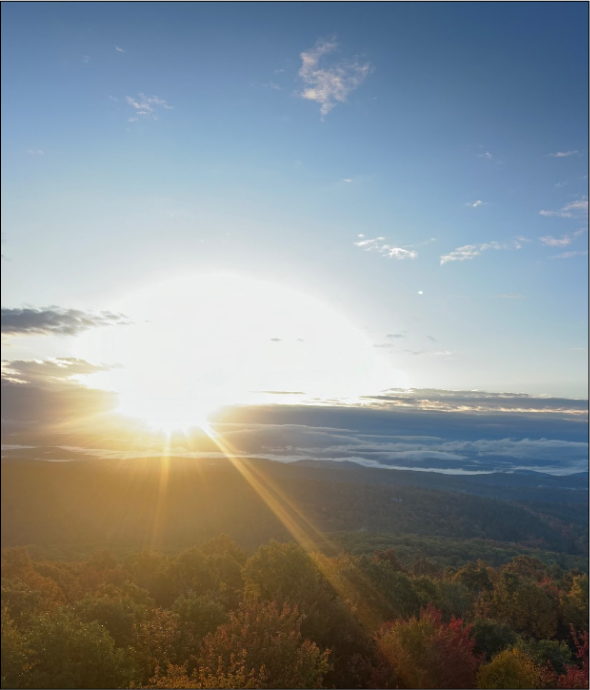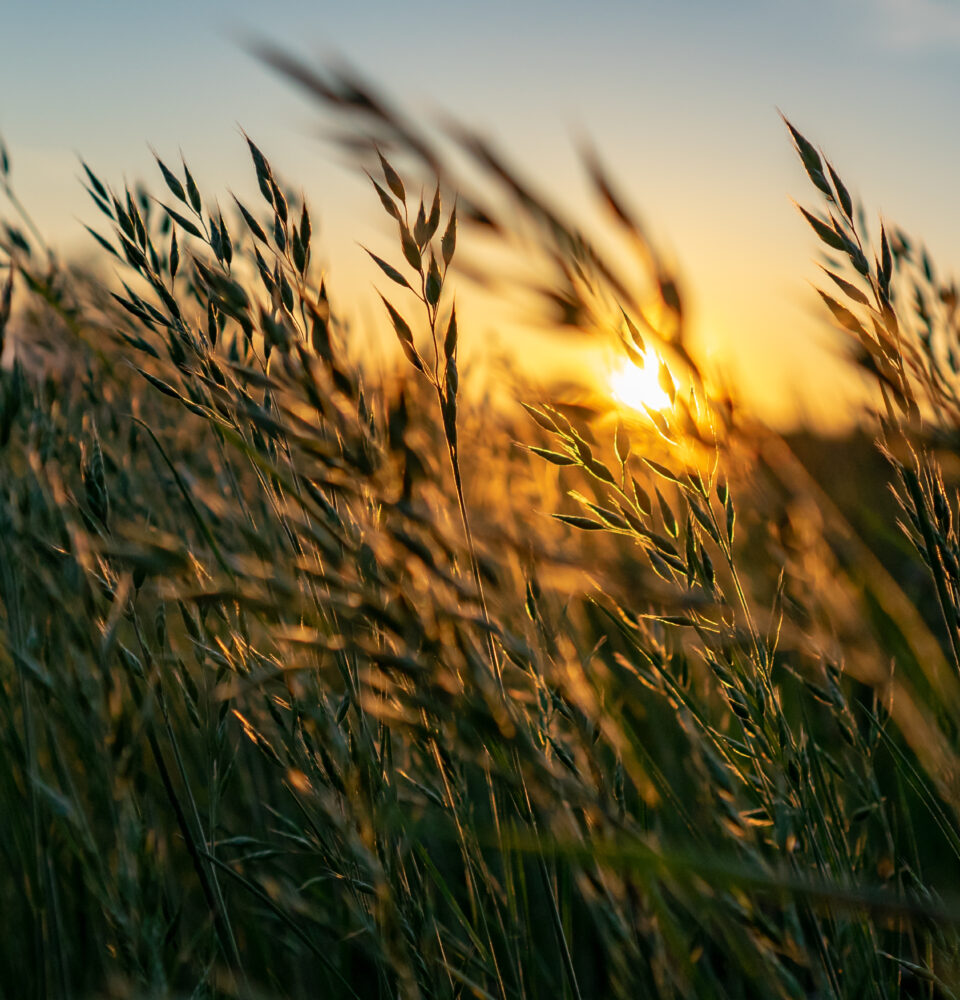We’re guessing you’ve already sipped your first pumpkin spiced latte of the season.
Over the last few weeks, you’ve most likely noticed the days getting progressively shorter, a chill in the air, leaves changing.
This shift from summer to fall marks the autumnal equinox in the northern hemisphere.
What does this actually mean? Aside from the leaves starting to change, sweater weather, and the availability of pumpkin flavored everything, the science behind the annual seasonal shift is interesting—and important to your quantum health.
Let’s take a Squint.

The Equinox Explained
Unlike the summer and winter solstice, which mark the longest and shortest days of the year, the equinoxes are not marked by extremes but by balance. The equinox happens twice a year and marks the time on earth when day and night are approximately the same length. The autumn equinox (September 22nd) officially marks the first day of fall and lasts until the winter solstice on December 21 (the shortest day of the year).
During the autumn equinox, the sun rests more directly above the equator. The earth tilts or aligns in such a way that both hemispheres receive almost an equal amount of sunlight. The balance is felt across the globe. Below the equator, they will experience the gradual lengthening of days and begin the approach toward summer (hello Vitamin D!). Above the equator, we will experience our days shortening, as we gradually move towards winter (no Vitamin D but hello health just the same!)
Our ancestors (in the northern hemisphere) enjoyed this time to reflect on the long days of summer light and the prosperous harvest. And, took time to party, celebrate and be grateful for the food that the strong light cycles of summer created. It was a time to celebrate nature, to honor a season’s passing and to look forward to the season ahead.

Today’s Equinox
Today, the mark of the equinox is arguably a bit more rushed, more abrupt. Let’s face it. The stores start decorating for the holidays before Halloween. And, it seems to happen earlier and earlier every year. I remember the good ‘ol days when Santa and his reindeer started to appear just after Thanksgiving. Remember that? Could our equinox decorations be getting lost in the seasonal shuffle?
Either way, the equinox is here and our earth (and our bodies) are experiencing a new season. Even without Target in our lives, the trees let us know that our seasons are changing. Nature tells us it’s time to notice as the luscious greens of summer turn to the rich reds, ambers, golds and browns of autumn.
Fortunately, most people notice. In fact, some get so excited, they even commit themselves to search out foliage. Yes, it’s time for the leaf peepers to come out. If you’re unfamiliar with the term, “Leaf Peepers” are the people that book a bed and breakfast years in advance to observe the changing colors of the leaves. Timing is everything. Nothing is more disappointing than peeping too early, or worse yet, peeping too late when the leaves have gone.
Guess what?
Squinters are peepers too! We love to take a closer look at everything.
Falling for Photosynthesis
Yes, at Squint, we love to connect with nature. We love to watch leaves and the story they tell. The fact is, the changing leaves is a quantum story about how plants capture light. A story that we should review.
Trees and plants are experts at capturing light. Photosynthesis is how plants convert light energy into chemical energy. Remember the whole sunlight, water, carbon dioxide conversion to oxygen and glucose? It begins with the absorption of light by specialized organic molecules, called pigments, that are found in the chloroplasts of plant cells. Chlorophyll is a green pigment that is present in every leaf. It is essential for the tree to process energy from the sun.
In Autumn, as the light and temperature changes, trees lose their green pigment from chlorophyll. The other pigments that were always present, but hidden, now become visible. In fact, the leaf peeping/show stopping colors of fall are always present in leaves even while they are green. It’s just now, the fall reveals a different spectrum of colors based on the light that shapes them.

Legends of the Fall: Our Mitochondria
Like humans, plants function to be as energy efficient as possible. That’s why trees make changes when the light and cold change (and drop their leaves in winter). As humans, we make changes too, but at a quantum level. When the seasons change, our bodies don’t visibly reflect a full spectrum of different foliage colors (but you could argue we do look a lot more pasty than we did with our great summer tans).
Our bodies, similar to plants, respond to light and although it may not be visible to us, our mitochondria create more or less energy, depending on the light-induced experience we experience.
So what do we signal to our mitochondria in the fall?
A whole new season!
The equinox is a big factor in our circadian biology. The light and cold changes that come with fall introduce our mitochondria to new variables, new gradations of light and new degrees of cold. Our new colder environment changes our mitochondrial coupling efficiency. (We learned this in our mitochondria articles) It is our mitochondria’s job to respond to our new season (and it is our job to help them do that).
Help Me, Help You
That’s what our mitochondria would say to us, if they could. It’s a new season, and our mitochondria are ready and waiting for us to experience it. They need light signals from us – and we need to get outside to tap the signal. Remember, our mitochondrial genes come from mom (the person that is always ready and prepared for everything!). It may be a new season, but our mitochondria are just waiting for us to signal to them where we are and what it looks like on the outside. By getting good daylight through our eyes and on our skin, we give them that light signal to help our bodies function best. It’s true. Our SCN (suprachiasmatic nucleus) and PVN (paraventricular nucleus) – i.e. our eyes/brain – ingest the light we provide to signal to our mitochondria to do their thing (assuming we aren’t wearing sunglasses). Now that fall is here, our eyes and skin respond to new changes in both light and temperature, and this tells our mitochondria how to regulate our metabolism, hormones and immunity. Yes, you can prevent colds by getting your light right.

Fall into New Light & Cold
It’s true. Colder weather and shorter days are here. You’re probably thinking that may not be a great time to get healthy? Not even close. In fact, there are amazing frequencies of light available during the colder months that are great for health and healing.
Once the fall comes, the cold—and lack of UVB light—stop sulfating our cholesterol from making Vitamin D. Instead our body begins doing the other things that our cells need to do to work optimally this time of the year. It’s fall and our cells can’t act like it’s summer anymore: the light and the temperature are different and our cells need to react and adapt to their new season of light and cold.
Our mitochondria, cellular water and cell membranes inherently know what to do when they are presented with information from sunlight. Depending on which frequencies are present, our cells know exactly where we are, the time of year, and even the time of day. Once the fall comes, our cells know precisely what to do. We are designed to keep taking in nature all year long, even when it starts getting cold.
So without Vitamin D, do we fall apart?
No. There is plenty of light to be had in the fall (and winter!) and we need to make the most of it. Remember, our energy comes from the interplay of light and water. Light informs the water networks in our body. And we are over 93% water. Our cells are filled to the brim with water, and that water acts differently in different light and different temperatures. What does that mean for us? Get light now, and all year long. Get outside, even if it’s cold. And even though you may no longer have access to strong UV light in your area, you absolutely need the other wavelengths, including red and infrared. Your body is craving them. As the days get shorter and sunshine doesn’t pack its same punch, we need a vast array of healthy wavelengths that our body requires to run our “powerhouse”. More than 50% of sunlight is red light, critical for our health. Infrared (42% of sunlight) is a great raw material for building the EZ water we need to power us through the holidays (and all year long!). Sunrises and sunsets are perfect opportunities to find this light, to build melatonin and build sleep and if it is freezing cold at sunrise and sunset, you say: BRING.IT.ON.

Routines to fall back on
As every good Squinter knows, we have genes for circadian regulation that depend on us to experience the light and cold in our environment (and not live an indoor life!). The fall is a new season to show our genes how to work, how to perform best. Our duty, from a health perspective, is to show our cells at the quantum level what it looks like on the outside, to expose our eyes and skin to the light and changing temperatures of nature.
In fact your hormonal balance, metabolism, immunity, and sleep regulation all depend on you getting signals of light, as nature delivers them. So, getting our {light right} both daily and seasonally matters! The combination of bright days and dark nights sync our circadian rhythm to sync our health.
What does this all mean? You must follow the Squintessentials! Start with simple routines to get your light right and your circadian rhythm in check. With every sip of that pumpkin spiced latte, remind yourself that it is absolutely Squintessential to get outside, get sunlight, ground to the earth, connect with nature, and take a break from screen time.
Thank you for taking a Squint with us! Don’t forget to print out our Fall Equinox Checklist to stay on top of your light routine.


